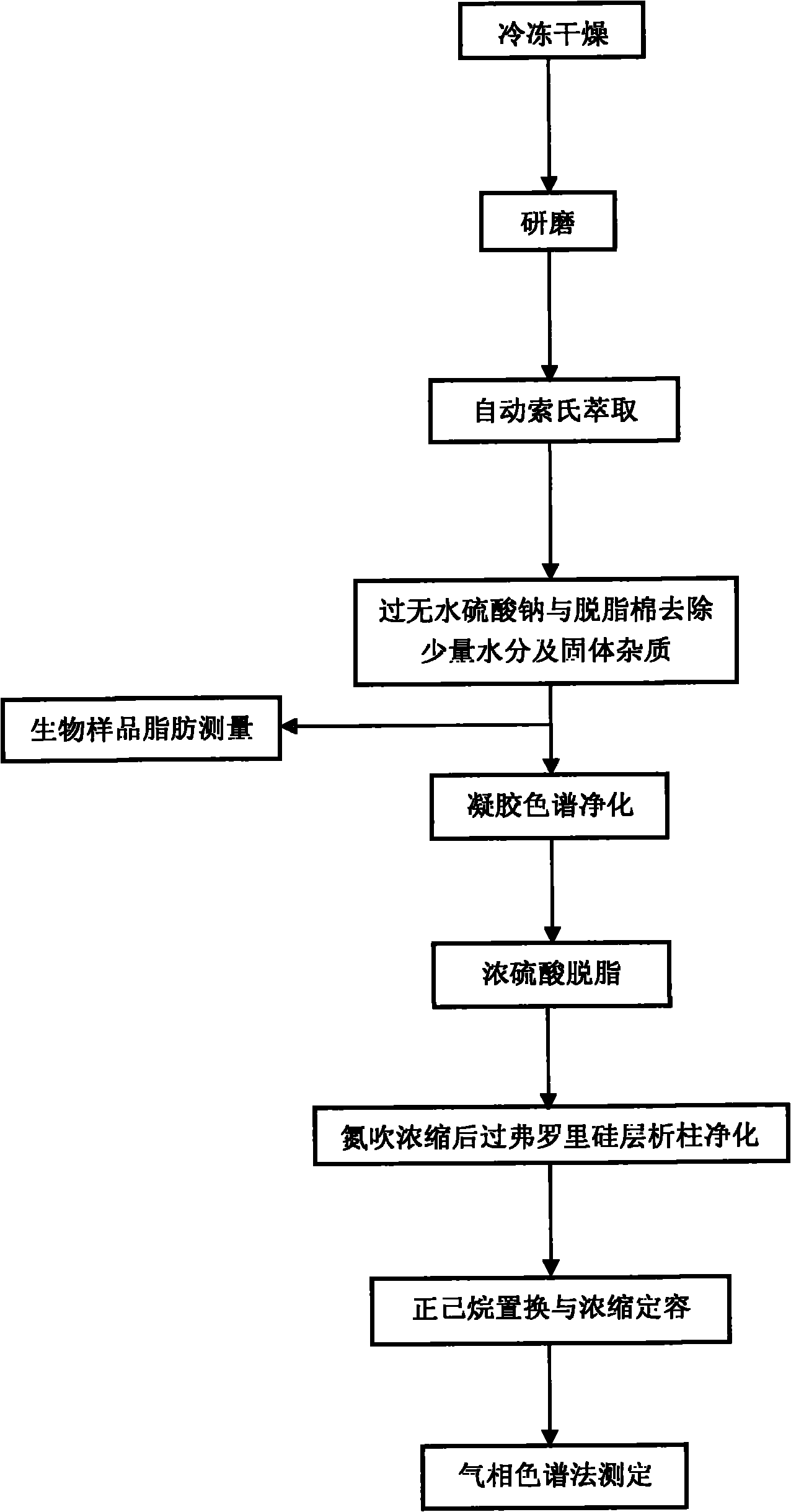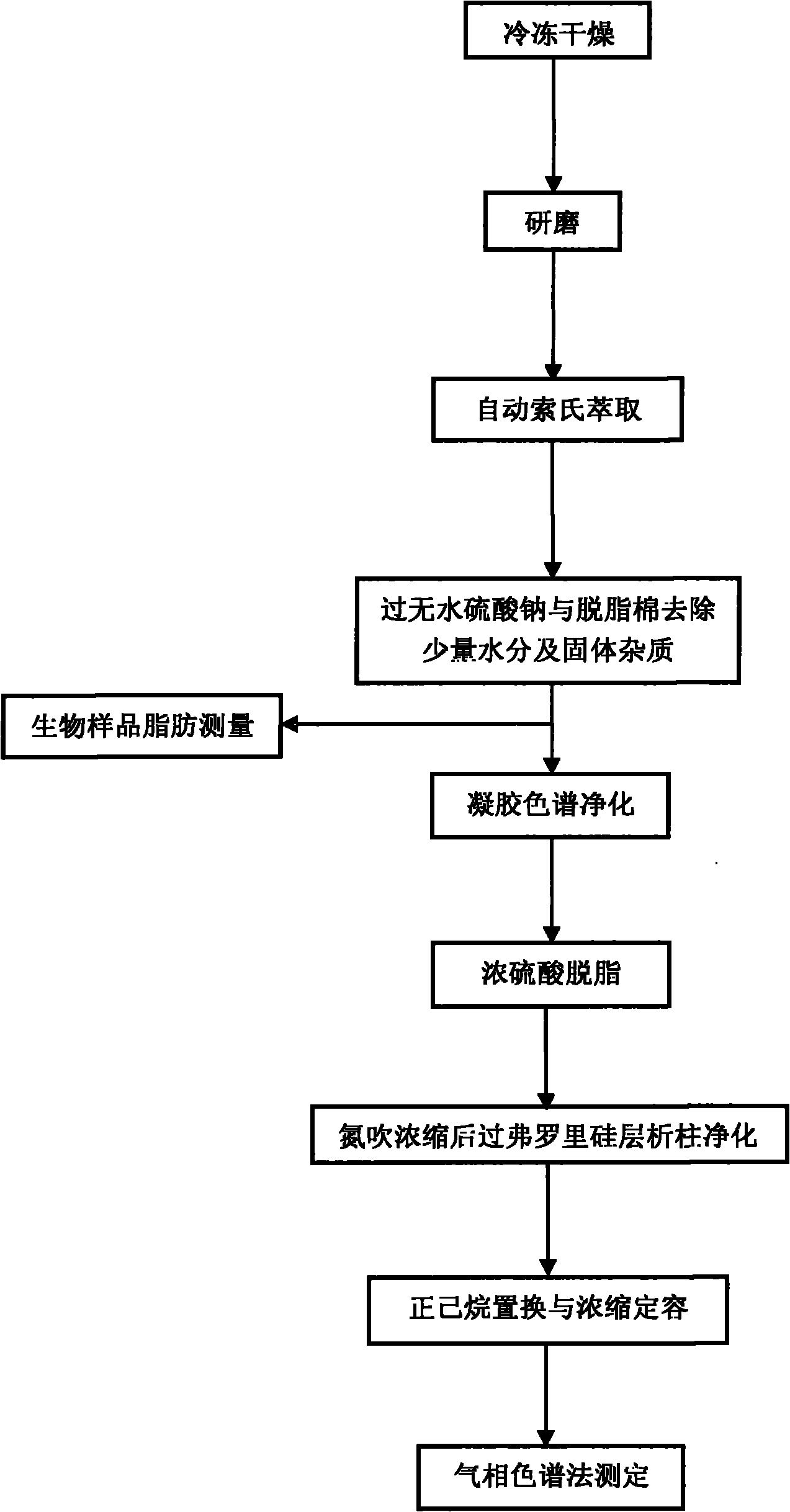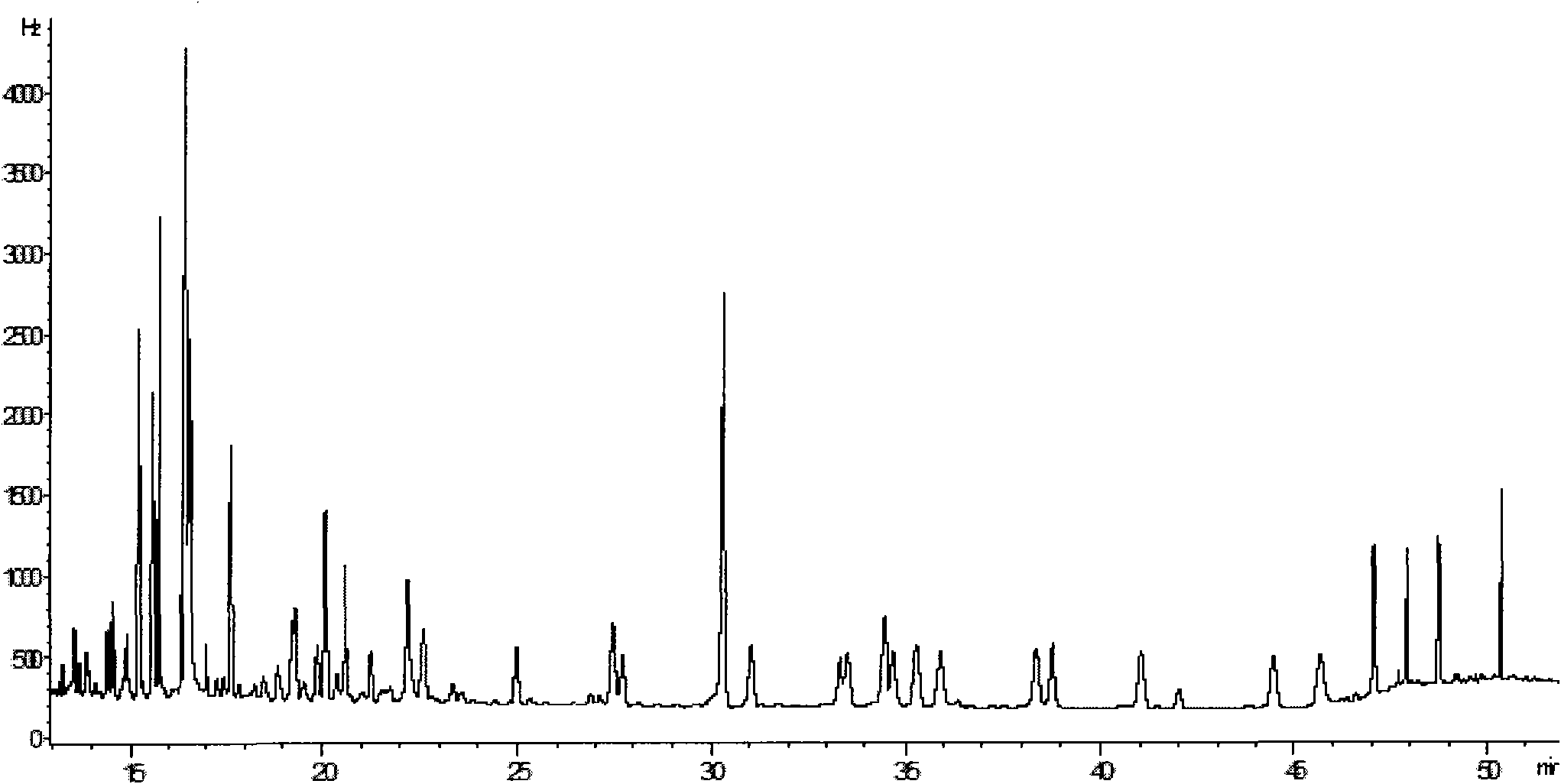Method for analyzing and determining organics persistently containing chlorine in aquatic product
A method of determination and technology of aquatic products, applied in the field of chemical analysis, can solve the problems of ineffective removal of impurity interference, complicated background of chlorine-containing compounds, and unguaranteed reliability of the method, achieving a high degree of column commercialization and a high degree of automation , Labor saving effect
- Summary
- Abstract
- Description
- Claims
- Application Information
AI Technical Summary
Problems solved by technology
Method used
Image
Examples
Embodiment 1
[0040] The present invention is used to analyze the wild whitebait in South Taihu Lake, Huzhou City, Zhejiang Province, and determine the types and contents of chlorine-containing organic matter therein.
[0041] The whitebait samples stored at -20°C were taken out from the refrigerator and thawed at room temperature. The whole fish was freeze-dried for 48 hours, and the dried samples were ground with an agate mortar.
[0042] Two samples of 3.0 g were accurately weighed by an electronic balance, and continuously Soxhlet-extracted with a mixture of 100 mL of n-hexane and acetone (volume ratio 1:1). The heating plate temperature of the Soxhlet extractor is 63°C, and the automatic extraction time is 960min. One part of the extract was measured by gravimetric method for the fat content of whitebait, and the other part was filtered through absorbent cotton with anhydrous sodium sulfate to remove a small amount of water and solid impurities.
[0043] The extract is then purified ...
Embodiment 2
[0048] The present invention is used to analyze the wild whitefish of South Taihu Lake in Huzhou City, Zhejiang Province, and determine the types and contents of chlorine-containing organic matter therein.
[0049] The white fish samples stored at -20°C were taken out from the refrigerator and thawed at room temperature. The back muscle of white fish was taken and freeze-dried for 48 hours. After drying the samples were ground with an agate mortar.
[0050] Two samples of 3.0 g were accurately weighed by an electronic balance, and continuously Soxhlet-extracted with a mixture of 100 mL of n-hexane and acetone (volume ratio 1:1). The heating plate temperature of the Soxhlet extractor is 63°C, and the automatic extraction time is 960min. One part of the extract was measured by gravimetric method for the fat content of white fish, and the other part was filtered through absorbent cotton with anhydrous sodium sulfate to remove a small amount of water and solid impurities.
[00...
Embodiment 3
[0056] The invention is used to analyze a certain fish muscle tissue provided by the United Nations Environment Program (UNEP), and to determine the type and content of chlorine-containing organic substances therein.
[0057] An electronic balance accurately weighed 2.5 g of the dried and ground sample, and extracted it with 100 mL of a mixture of n-hexane and acetone (1:1 by volume) for continuous Soxhlet extraction. The heating plate temperature of the Soxhlet extractor is 63°C, and the automatic extraction time is 960min. The extract is filtered with absorbent cotton with anhydrous sodium sulfate to remove a small amount of water and solid impurities.
[0058] The extract is then purified by a gel chromatograph to remove large molecular weight substances. The solvent is concentrated to 8mL during the single concentration procedure, and the solvent is replaced with n-hexane and concentrated to 4mL during the double machine procedure; then the purified solution Concentrate t...
PUM
 Login to View More
Login to View More Abstract
Description
Claims
Application Information
 Login to View More
Login to View More - R&D
- Intellectual Property
- Life Sciences
- Materials
- Tech Scout
- Unparalleled Data Quality
- Higher Quality Content
- 60% Fewer Hallucinations
Browse by: Latest US Patents, China's latest patents, Technical Efficacy Thesaurus, Application Domain, Technology Topic, Popular Technical Reports.
© 2025 PatSnap. All rights reserved.Legal|Privacy policy|Modern Slavery Act Transparency Statement|Sitemap|About US| Contact US: help@patsnap.com



